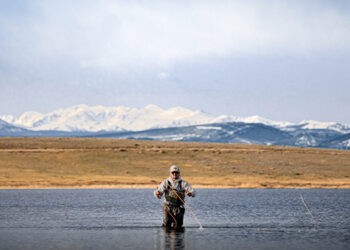If you watched any of the summer Olympics in Rio de Janeiro or even just followed the news coverage, you probably heard about the diving pool turning a lovely shade of bright green. It happened suddenly and initially — no one could explain why. In the end, it turns out the green hue was caused by a proliferation of algae due to the high temperatures and lack of wind.
As an aquatic director or operator, the thought of your pool turning green probably sounds like your worst nightmare. It is your mission to keep the pool clean and a perfect, crisp shade of blue.
When Queens University of Charlotte updated The Levine Center for Wellness and Recreation from 30,000 square feet to 147,000 square feet, this included expanding the aquatics center. According to John Long, the associate head coach for Queens swimming, since the expansion the pool deck is not only bigger, but cleaner. He said as a result, there were notably fewer inhalers in the aquatic center.
“Indoor natatoriums are notorious for, ‘Oh I can smell the pool,’” said Long. “The air is horrible. It causes people to cough. If you go online and do research of bad air in indoor swimming pools or Lifeguard Lung, you’ll find a plethora of negative articles.”
But Queens University of Charlotte has found a way to remedy the smell problem and keep their water looking like “you’re at one of the most beautiful Caribbean settings you can imagine,” said Jeff Gaeckle, the owner of Carolina Pool Management. Gaeckle was hired by Queens University of Charlotte to help establish and maintain the new pool at the university.
Together, Gaeckle, Long and Jeff Dugdale, the director of swimming operations, put together a “Recipe for Success.”
Queens University of Charlotte’s Recipe for Success
Pre-Chlorine Level: 1.5
pH Level: 7.4
Alkalinity Level: 400 to 500
Combined Chlorine: .2 parts per million
In order to ensure swimmers receive perfect water conditions, they stick to this “Recipe for Success” and run through a checklist to ensure all of the pool’s levels are correct every hour.
But in addition to the “Recipe for Success,” the university installed a Paddock Evacuator, which is the key behind the fresh air in the natatorium. “The Paddock Evacuator is the solution to very common air-quality issues in just about any indoor swimming facility,” said Gaeckle. “The Evacuator was designed to source capture and exhaust off-gassing disinfectant by-products (DBPs) produced by chlorine oxidizing organics in the pool water. These DBPs are what give pool air the chlorine smell. If you can smell the pool, that is not a good sign.”
In order to build an excellent aquatics center, Dugdale said it’s important to surround yourself with excellence, which is why the university outsourced to Carolina Pool Management. It’s also why the university received a platinum LEED certification, and the swim team has won two NCAA championships and 27 Olympic Medalists train in the facility.
Skylar Rorabaugh, the director of campus recreation at the University of Colorado, Colorado Springs, follows a similar protocol. Rorabaugh has a checklist he maintains every hour to ensure all levels in the pool are correct. Then, he shares that checklist on a Google Spreadsheet so the rest of the department is up to date on their responsibilities within the aquatic center.
Monthly, Rorabaugh and his team do “360 Evaluations.” Through this process, they walk the entire facility and evaluate each area of the recreation center, as well as the filtration, chemical system and pool supplies. “As far as all the different checklists, it’s a lot of information that we’ve collected over the years,” Rorabaugh said. “It’s really just based on our users, our patron feedback, as well as what we’ve experienced over time. So it’s a historic collection of items as well.”
The University of Colorado, Colorado Springs Aquatic Center, is also powered by solar panels, which are placed on the roof of the building. “We save thousands of dollars a year by being able to utilize that system for our pool operations,” said Rorabaugh.
All aquatic directors and management operators stated aquatic centers are becoming a recruitment tool for incoming students. Having a safe, pristine and well-kept environment will not only grow your facility, but may even bring a few Olympic gold medals.










